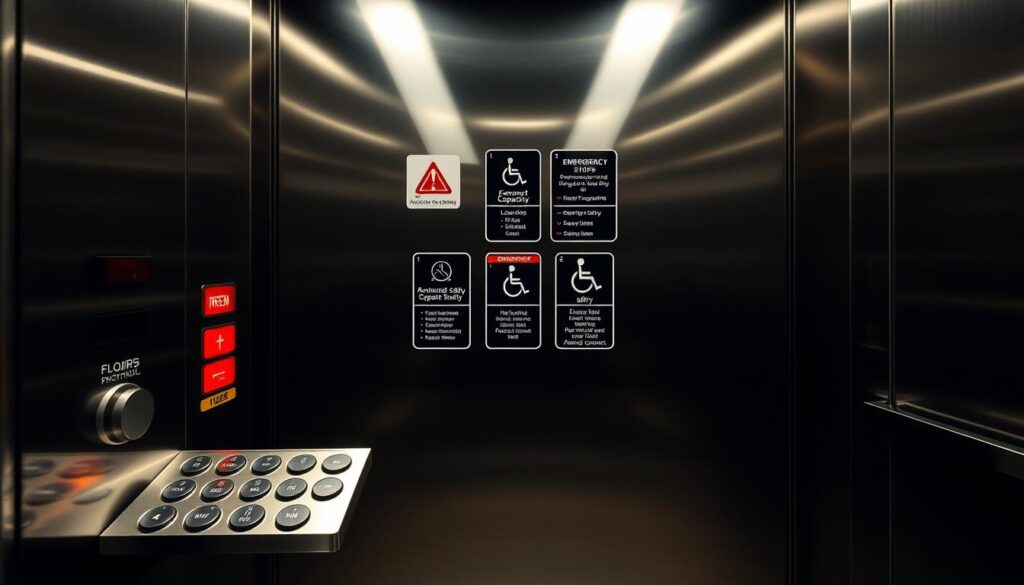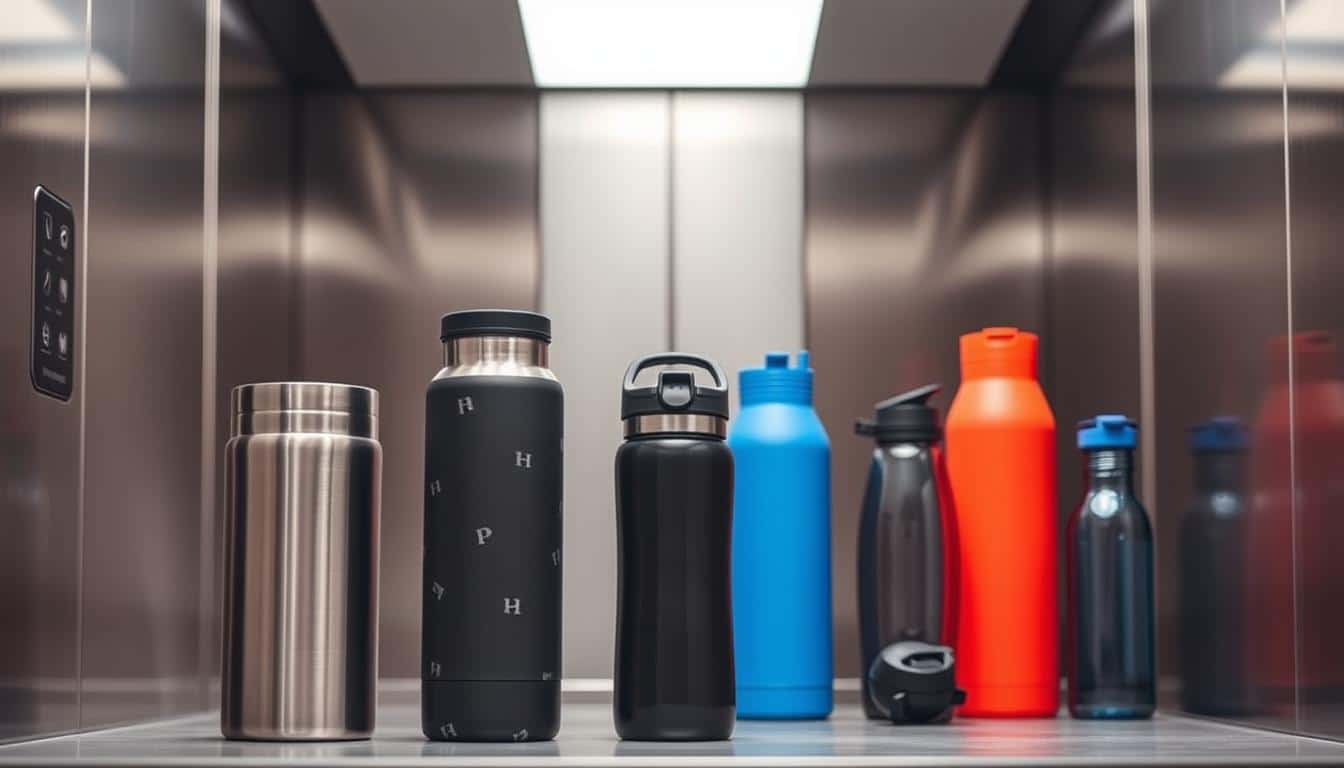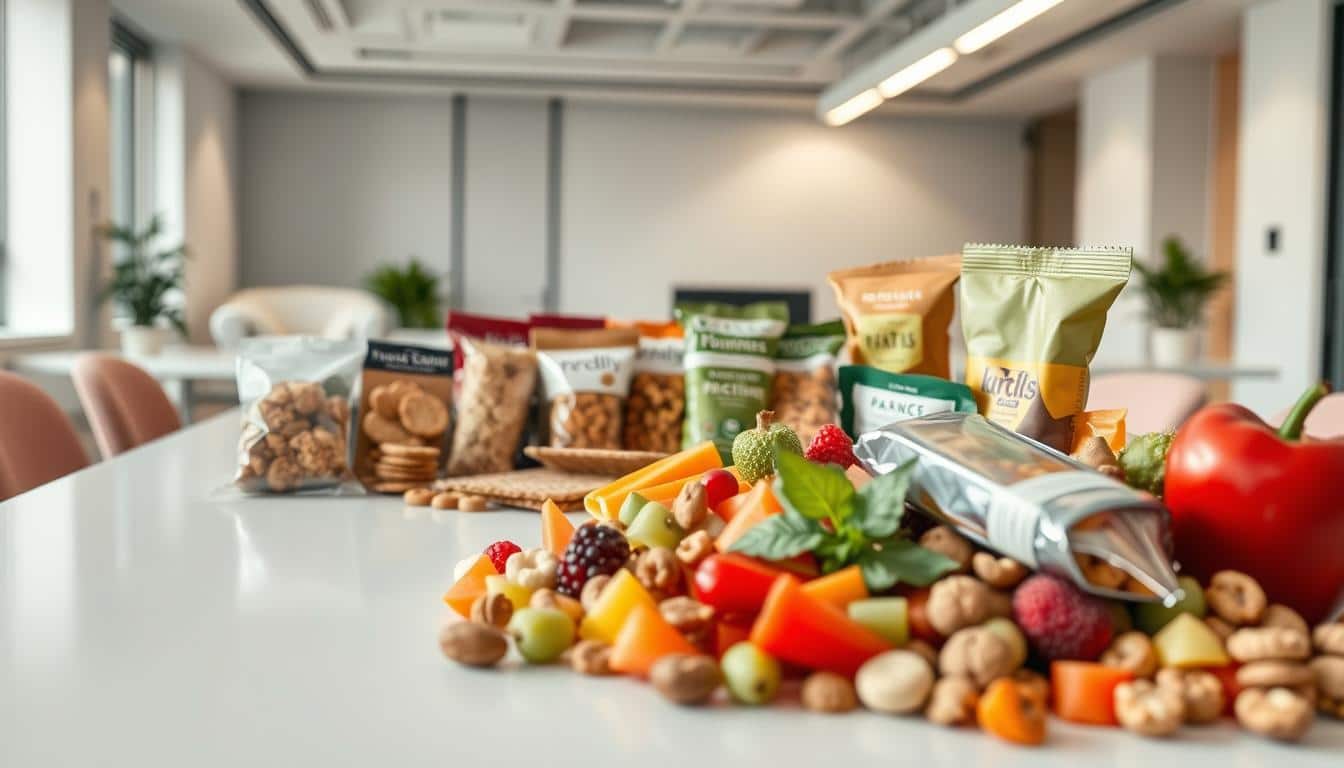Combining elevator safety with food safety is crucial in today’s office spaces. Knowing the risks and choosing the right actions will make workplaces safer for everyone. We’ll look at the key food safety steps for offices, including safe ways to move food in elevators. These rules help keep our food and work areas safe every day.
The Importance of Food Safety in the Workplace
Making sure food is safe at work is very important for keeping employees healthy. The facts about illnesses from bad food show the dangers of not handling food right. Each year, over 48 million Americans get sick from food, says the FDA.
This big number shows why it’s key to have good food safety at work. It helps keep everyone safe and work going smoothly.
Understanding Foodborne Illness Statistics
Illnesses from food can range from stomach upsets to serious health issues. These problems can hurt workplace health, causing more people to miss work. This can lower how happy and productive employees are.
Knowing how common these illnesses are helps employers protect their staff. They can create a safer work environment.
Impact of Food Safety on Employee Health
Workers need to be safe from dangers in their food at work. Strong food safety rules help reduce these risks. They also show that employers care about their workers’ health.
This careful approach builds a culture of safety and boosts work output. It’s crucial to know your duty to keep the workplace safe. Food safety issues can have big effects on both workers and their bosses.
Common Food Safety Risks in Office Settings
Office environments often have unique food safety risks that can affect employee health. It’s crucial to know these potential dangers to keep the workplace safe. Problems like cross-contamination and the importance of temperature control are key. They both play a big role in causing foodborne illnesses.
Cross-Contamination Concerns
Cross-contamination is when harmful bacteria spread from one food to another. This can happen due to not handling food right in offices. For example, it occurs when food is made on dirty surfaces or when utensils aren’t cleaned well. Workers must learn about ways to stop this:
- Ensure all food prep areas are clean and sanitized before use.
- Use separate cutting boards for raw meats and other food items.
- Store foods in sealed containers to prevent contact.
Temperature Control and Its Significance
Keeping the right temperature is crucial in lowering food safety dangers. The USDA says keeping foods between 40°F and 140°F is risky because bacteria grow fast. Watching and managing fridge and serving temperatures helps a lot. Try these tips:
- Regularly check refrigerator and freezer temperatures to ensure they’re safe.
- Quickly put perishable foods in the fridge within two hours of making them.
- Throw away foods left out at room temperature for more than two hours.
Elevator-Safe Food Safety Practices for Offices
Keeping food safe in offices is important, especially when using elevators for moving it. It’s key to follow proper steps in elevators to keep food clean. Here are important tips to do just that.
Maintaining Hygiene Standards
It’s crucial to keep things clean when handling food in elevators. Make sure to clean elevator parts often. This helps keep germs away. Try these steps:
- Clean elevator walls, buttons, and floors routinely.
- Ensure that staff wash their hands before and after handling food.
- Utilize disinfectant wipes on surfaces frequently touched during food transport.
Handling Food Properly in Elevators
Follow rules to keep food safe in elevators. Elevators can have germs that harm food. Keep these points in mind:
- Utilize sanitized containers for storing food during transport.
- Avoid placing food items directly on elevator surfaces.
- Limit the number of people in the elevator while transporting food to reduce exposure.
Managing Food Transport Safely
Be careful to prevent food from getting contaminated during transport. Use these strategies for safe moving:
- Use separate bags for raw and cooked food items.
- Monitor the temperature of perishable items during transport.
- Communicate elevator procedures with all staff involved in food handling.
Best Practices for Packing and Storage
Packing and storing food correctly is key to keeping it safe in offices. Using the best containers and tools helps avoid germs and keeps food fresh. Proper labels tell employees what they need to know. Here are some top tips for office food storage.
Choosing Safe Containers and Tools
It’s important to pick the right containers for storing food. We suggest these choices:
- Use BPA-free plastic containers, glass jars, or stainless steel options.
- Ensure containers are airtight to keep food fresh and free from pests.
- Choose size-appropriate containers to minimize wasted space and prevent crushing.
Proper Labeling of Food Items
Labeling food is very important, especially at work. Clear labels help avoid mixing up foods that could cause allergic reactions. Here’s how to label food well:
- Include ingredients to inform employees with food allergies or dietary restrictions.
- Clearly mark expiration dates to ensure food is consumed before spoilage occurs.
- Utilize waterproof labels that withstand moisture in food storage areas.
Employee Training and Awareness Programs
To create a safe food environment, it’s crucial to have structured safety training. Training helps workers know more about safety and their duties in the workplace. It covers important things like cleanliness, how to handle food correctly, and spotting safety risks.
Implementing a Food Safety Training Program
Setting up a good food safety training program involves a few important steps:
- Make goals that include all the important safety practices.
- Use different ways to teach, like workshops, online classes, and doing things by hand.
- Offer refresh courses to keep everyone up-to-date with new rules.
- Test employees to see how well they understand the safety rules.
Encouraging Employee Responsibility
Making sure employees feel responsible for keeping food safe is key to a healthy workplace. This can happen by:
- Celebrating safe work habits and making safety a big part of the company culture.
- Having open talks about safety issues and how to improve.
- Providing help and information so employees know their roles in keeping food safe.
- Putting up signs and posters about safety rules where everyone can see them.
The Role of Elevator Safety in Food Transport
Elevators are vital for moving food safely in office buildings. To move food items, it’s important to follow safety rules. This keeps the food, the employees, and everyone else safe. Knowing how to use an elevator safely can lower the risk when transporting food.
Understanding Elevator Safety Protocols
Knowing elevator safety rules is good for everyone. Here are some important rules:
- Make sure food is packed well to avoid spills.
- Keep away from the doors until they fully open or close.
- Try to use specific elevators during busy times if you can.
Recommended Elevator Etiquette
Good manners in elevators make them safer and nicer for everyone. Things to remember include:
- Let others out before you go in with food.
- When you have big items, don’t crowd the elevator.
- Be clear and kind when you need to get by people.

Cleaning and Sanitation Procedures
It’s vital to have good cleaning and sanitation plans for keeping food safe in offices. Paying attention to how we clean where we prepare food cuts down on harmful bacteria. It makes for a healthier place to work. Setting up a regular cleaning plan keeps surfaces and tools for food in top shape. This helps stop contamination when handling food. It’s a key part of keeping food safe that we can’t ignore.
Regular Cleaning Schedules
Sticking to a set cleaning routine improves cleanliness in areas where we prepare food. Here’s what these schedules often include:
- Daily cleaning of countertops, utensils, and cooking appliances.
- Weekly deep clean of fridges and storage spaces.
- Monthly checks on how food is stored, to keep things hygienic.
This way, we keep places where we prepare food clean and safe. It ensures hygiene is always top-notch in the office.
Sanitation Practices for Food Preparation Areas
Good sanitation is crucial in places where food is made. Important points are:
- Choosing the right cleaning products meant for surfaces that touch food.
- Cleaning often-touched spots like door handles and light switches regularly.
- Setting up spots for washing hands, and making sure people use them before they handle food.
By focusing on these sanitation methods, offices can greatly reduce the chances of illnesses from food. It helps make food prep areas much safer.
Emergency Responses for Food Safety Issues
Being ready for food safety emergencies at work is very important. Creating good emergency plans can really help lessen issues from bad food incidents. It’s key that clear rules are in place so workers know what to do fast if they think there’s a problem with the food.
Establishing Protocols for Food Contamination
It’s vital for places to have set rules on how to handle bad food incidents. These rules should cover:
- Finding where the bad food might have come from.
- Quick actions to lower risks, like keeping the bad food away from the good.
- Writing down everything about the incident to figure out what went wrong and how bad it is.
- Telling the bosses and the right officials when needed.
Effective Steps for Handling Foodborne Illness Outbreaks
When there might be a foodborne illness, acting fast and together is key. Workers need training on these important steps:
- Tell a boss or the right person right away if anyone feels sick.
- Figure out what food might be causing the issue.
- Help keep the problem food away from people.
- Get the emergency team to check everything and fix what’s wrong.
Conclusion
It’s very important to add strong food safety practices in office settings, including in elevators. Keeping a clean and healthy office helps everyone’s well-being. Putting these safety actions first cuts down the chances of getting sick from food at work.
Using the methods we talked about, like keeping things clean and moving food safely in elevators, makes a better space for workers. This dedication to keeping food safe boosts how much work gets done. It also helps build a strong focus on health and safety at work.
Both bosses and workers need to do their part in following these safety tips. By taking these steps, companies make their workplaces safer and healthier. This lowers the dangers of dealing with food and using elevators.



